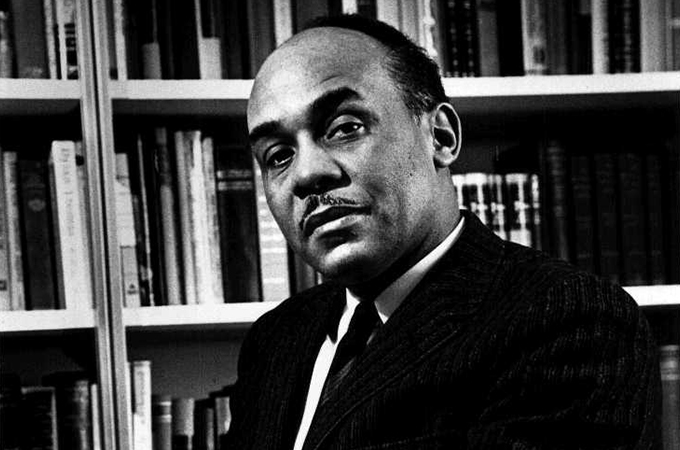I read Ralph Ellison’s Invisible Man (1952) for the first time in college, to the best of my hazy recollection. I have no memory of the teacher who led the class through the text, merely a sense the book was “important.” It’s a humbling reminder of the ephemeral impressions students take away from classes.
I recently took an opportunity to reacquaint myself with the book, prompted by a former student. I posted on the University of Redlands English Department’s Facebook group about several books by African American authors I had read this summer, and alumna Melissa Darcy shared her own reading list as she prepped for teaching English this fall at Del Norte High School (near San Diego). Her list included Invisible Man. It struck me as a fitting addition to the more recent works I had finished, a way to ground them in a longer tradition of what I rather academically thought of as “the black experience.” Ellison’s “historical” perspective would be a useful context.
One of my few memories of the book was a scene shortly after the unnamed narrator arrives in New York and is briefly employed at a paint factory. He is assigned the task of doing the final mixing for the company’s best-selling paint, Optic White, which the company proudly markets as “the right white.” This paint color is the mainstay of the company, and is used for a lot of government projects, he’s told. He is shocked to discover the secret to the stark white is the addition of 10 drops of black paint. It’s a brilliant, economical way to get across the complex idea that whiteness uses blackness to define itself. The further implications of such “whitewashing” of national monuments and government buildings drives home the commentary.
On my second read, I was expecting such artful, literary moments, and I encountered plenty of them, but I also found a deeper level of visceral pain and rage than I recalled.
One of the scenes that took on deeper significance for me was the “battle royale,” in which the narrator, then a high-school-age boy, is coerced to fight with eight other black boys for the entertainment of a group of drunken, wealthy white men; the last boy standing will win a cash prize, and the competition is brutal and surreal. This time through the book, I saw how the battle royale illustrated the way in which people of color are often reduced to physical specimens. While the carousing businessmen can no longer make the boys stand on a block to be itemized, they can, with sufficient financial incentive and social intimidation, pit them against one another. Later in the novel, white women repeatedly turn an equally appraising eye on the narrator.
The battle foreshadows the tactic of the Brotherhood, a coalition of white and black activists putatively working together along “scientific” political principles to bring about a new, egalitarian society. The narrator realizes, too late, that the white men who call him “brother” and give him a new name, a salary, and a feeling of importance, are ultimately playing a long game that views individual black participants as expendable.
What I was most surprised to realize I had either forgotten or missed on my initial reading was the narrator’s increasing sense of claustrophobia. He keeps approaching situations thinking he knows the rules and how to play by them, even when his sense of the rules binds him to behavior that the reader can see clearly works directly against his best interests. The narrator gradually becomes aware of this, but so deep is the conditioning that all he can do is watch himself flounder in growing frustration and dread. Because the narrator speaks so confidentially to the reader, I found myself caught up in his panicky emotional reactions, understanding why he thought he was doing the right thing only to have it become a disaster.
The narrator’s epiphany comes after a young, unarmed black man is shot by a cop, and Harlem explodes. He is finally able to abandon his self-destructive scripts, but only at a price. The description of the chaos is surreal, but, crushingly, all too real, and all too familiar.
I suppose my additional 20 or so years of life experience has something to do with my new perspective, but I think my reaction to the book was also strongly influenced by witnessing the courage of Black Lives Matter, the vitriol directed at our first black president, and the climbing statistics of police violence.
Although Invisible Man was published 66 years ago, Ellison’s novel still has things to tell us about how race is constructed in our country, the painful legacies woven through those constructions, and the dangers of the resulting inequities. Ellison’s nameless narrator describes himself as invisible because no one sees him for who he really is—not his white “benefactors,” not his white “brothers,” not the black teachers who condemn him for following their own lessons of assimilation, and not his Harlem neighbors. Everyone projects an identity onto him, established by the limiting script of race.
This novel makes powerfully visible the complexities of race relations not only in our past, but in our present. It’s definitely worth a second look.
For more information about studying literature at the University of Redlands, see U of R’s English Department.






